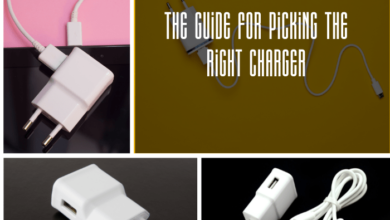Beginner’s Guide for Saddle Hunters

Saddle hunting is an exhilarating and innovative approach to hunting that has been gaining popularity among outdoor enthusiasts. Instead of relying on traditional tree stands or ground blinds, saddle hunters use specialized equipment to suspend themselves from trees, giving them a unique vantage point for their hunts.
Saddle hunting involves the use of a comfortable saddle harness and a tethering system, allowing hunters to sit, stand, or even recline in the tree canopy. This method provides hunters with unmatched mobility and versatility while remaining concealed from the keen eyes of their quarry.
Why Choose Saddle Hunting?
Saddle hunting offers several advantages over conventional hunting methods. It provides increased mobility, allowing hunters to quickly adapt to changing conditions. Whether you need to shift to a different tree or reposition yourself for a better shot, saddle hunting allows for easy adjustments.
One of the key benefits of saddle hunting is its minimal environmental impact. By avoiding the installation of permanent tree stands and minimizing ground disturbance, saddle hunters can minimize their footprint in the wilderness, making it an ethical choice for conservation-minded hunters.
Essential Gear for Saddle Hunting
To get started with saddle hunting, you’ll need some essential gear. Here’s a breakdown of what you should have:
Saddle Harness: The heart of saddle hunting, this harness secures you to the tree and provides comfort during extended hunts.
Lineman’s Belt: Used for climbing and securing yourself to the tree while setting up your saddle system.
Tether System: This keeps you attached to the tree, providing safety and stability.
Platform or Saddle: A platform or saddle serves as your seat and workspace while in the tree.
Tree Strap: Secure your tether to the tree with a strong and reliable strap.
Carabiners: These are essential for attaching various components of your saddle system.
Safety Rope: An additional safety measure, a safety rope can be used in conjunction with your tether.
Backpack for Gear Storage: You’ll need a backpack to carry your gear and equipment into the woods.
Setting Up Your Saddle System
Proper setup is crucial for safe and effective saddle hunting. Before heading into the woods, ensure you know how to correctly attach your saddle harness to the tree and the various components of your system. Practice setting up your gear multiple times to become proficient.
When setting up your saddle system, it’s essential to inspect all equipment thoroughly. Check for any signs of wear or damage that could compromise safety. Always follow the manufacturer’s instructions for your specific gear.
Choosing the Right Tree
Selecting the right tree is essential for a successful saddle hunt. When choosing a tree, consider the following factors:
Sturdiness: Ensure the tree is healthy and capable of supporting your weight.
Minimal Dead Branches: Avoid trees with many dead branches that could create noise or impede your movements.
Shooting Lanes: Identify clear shooting lanes from your chosen tree.
Wind Direction: Consider the prevailing wind direction and position yourself downwind from your expected game.
Climbing Techniques for Saddle Hunters
Saddle hunters use various climbing methods to reach their hunting height. Here are some common techniques:
Climbing Sticks: These portable steps can be attached to the tree, providing secure footing as you ascend.
Rope Ascenders: Rope ascenders allow for a smooth and controlled ascent, and they can be especially useful for taller trees.
It’s crucial to master these climbing techniques to ensure a safe and efficient climb to your hunting location.
Safety Precautions
Safety should always be a top priority when saddle hunting. Here are some key safety precautions to follow:
Double-Check Your Gear: Before each hunt, inspect your gear for any signs of wear or damage.
Use a Fall Restraint System: Always stay attached to the tree using your tether system or safety rope.
Share Your Location: Inform someone you trust of your hunting location and your expected return time.
Stay Within Your Comfort Level: Only hunt at heights and in conditions that you feel comfortable with.
Tips for a Successful Hunt
Increase your chances of a successful hunt with the following tips:
Study Game Behavior: Learn the habits and patterns of the game you’re pursuing, including their feeding, resting, and traveling times.
Scent Control: Use scent control techniques to minimize your odor and avoid detection by game animals.
Patience: Saddle hunting provides excellent concealment, so be patient and wait for the right opportunity.
Practice Shooting Positions: Practice shooting from your saddle to ensure accuracy when the moment of truth arrives.
Navigating Through Different Terrains
Saddle hunting allows you to adapt to various terrains easily. Whether you’re in thick forests or open fields, your mobility can give you an advantage. Use your climbing skills to access the perfect location for your hunt.
Camouflage and Concealment
To remain undetected by game animals, it’s crucial to blend into your surroundings. Wear camouflage clothing appropriate for your hunting environment, and use natural cover to further conceal yourself. Avoid making sudden movements that could give away your position.
Conclusion
Saddle hunting offers an exciting and effective way for beginners to enter the world of hunting. With the right gear, knowledge, and ethical approach, beginners can quickly become proficient saddle hunters. It’s a thrilling adventure that combines the joy of the outdoors with the challenge of the hunt.



